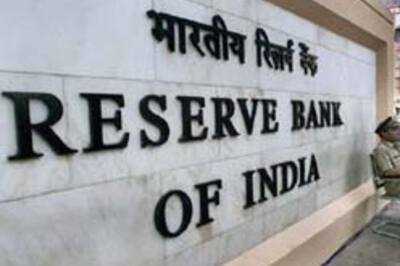
views
Describing the deity of the ancient Dhakeswari Temple here as a “mother to all humans”, a priest of the revered shrine said several Hindus, Muslims and others from the local community had come together to guard it soon after the fall of the Sheikh Hasina government in Bangladesh.
The centuries-old temple in old Dhaka has many mosques in its vicinity and chimes of temple bells at times merge with the sound of ‘azaan’ emerging from nearby mosques. PTI on Friday visited the Sree Sree Dhakeswari National Temple, one of the prominent ‘shakti peethas’, and interacted with priests and members of the Hindu community who visited the shrine.
While a young married couple had come to seek blessings for their two-month-old daughter, a woman lit candles at a corner of the temple courtyard facing the sanctum sanctorum and diligently prayed. “People of many religions come here to pray. And, Maa (Goddess) is mother to all humans whether it is Hindus, Muslims, Christians or Buddhists. They come here to seek solace, prosperity and mental peace,” Ashim Maitro, one of the main priests, told PTI.
After serving the temple for 15 years, he looks at the shrine of ’Maa Dhakeswari’ as a symbol of religious and communal harmony. The 53-year-old priest, some of whose family members also live in West Bengal, says the evening aarti of this temple is performed at 7 pm, nearly 30 minutes after the Maghrib prayer at mosques nearby.
Maitro said on August 5, when the anti-government protests had reached their peak leading to the ouster of the Hasina government and her fleeing to India, he was at the temple premises. “I was not feeling afraid for myself but just concerned about the safety of our old temple and idols of deities here. The temple committee members were also present and we closed the doors and the main gate,” the priest recalled.
When Prime Minister Hasina left the country, ”no visitor was here”, he said, adding there was ”no police force” either at that time as everything was in disarray amid political chaos.
“Members of the local communities helped. Muslims, Hindus and others came to stand guard outside the temple so that no harm comes to the temple,” the priest said and expressed relief. “Nothing untoward has happened here from that day till today,” he said. Maitro said on August 5, they continued to perform regular puja ”without any break” and since then ’bhog’ has also been offered every day as per the timings of the rituals.
The shrine is open to visitors from 7 am to 2 pm and 4 pm to 9 pm. A banner each has been put up recently at the main gate and in a courtyard near the main temple bearing a message in Bengali that says “prayers for the repose of the soul of those who have died during the recent student-led protests” and “wishes for the speedy recovery to the ones who got injured”.
“During the movement, most of the Hindus had confined themselves to their homes and there was a thin presence of the community at the temple. Now, the number of people coming to the temple is slowly growing. This Friday more people came here than on the Friday before,” the priest said. Hindu, Muslim, Christian, Buddhist, people from all communities come here, and “there is no restriction” but people have to follow timings, he added.
People from outside Dhaka in Bangladesh and even from India come to visit this ancient temple. Nearly, every day, people from the Indian community in Bangladesh visit the temple, Maitro said. An interim government with Nobel laureate Muhammad Yunus as the Chief Adviser was sworn in on August 8 following the dissolution of the Parliament, a decision prompted by a demand by the Anti-Discrimination Student Movement. A team of advisers has also been appointed.
On August 13, Yunus visited the Dhakeswari Temple and reached out to the distressed Hindu community members in the wake of attacks on the minority communities. Clad in his trademark kurta-pyjama, Yunus sat along with the officials and interacted with the Hindu community at the temple premises. “Yes, I was there when he visited the temple. They welcomed him (Yunus) with the beating of the ’dhak’, and I and other priests brought him to pay respect to the deity. He spent about 20-25 minutes here,” Maitro recalled.
“After the fall of the previous government, there was no administration or police deployment. After the formation of the interim government, slowly police personnel have been deployed at the temple premises and now their number has grown strong,” he said, adding ”police is now here day and night”. Maitro, who was born in the year of Bangladesh’s independence in 1971, says, “Now, it feels normal here,” adding about 1,000 people visit the temple on average per day.
The priest said his message to the Indian government is that “we remain well in Bangladesh” and to the Hindu community of India, he said “We are brothers” and peace must prevail. Sajeeb Karr, a member of the Hindu community in Dhaka, who visited the temple on Friday along with his wife to seek blessings for their two-month-old daughter, also said ”it feels normal now”.
A woman from the Hindu community in Dhaka who visits the temple almost every Friday, on the condition of anonymity, told PTI, “I come here to find mental peace and Maa makes us calm. I also go to Siddheshwari Kali temple here.” Members of the Hindu community gather at the Dhakeswari Temple premises to celebrate Durga Puja and other festivals, and now the temple committee is gearing up for the Janmashtami festival on August 26.
“We will have a celebration here on Monday to mark the birth anniversary of Lord Krishna, and interim government ’s religious affairs adviser and law affairs adviser Asif Nazrul and information adviser Nahid Islam are also expected to visit the temple that day,” the priest said. Maitro said those who participated in the agitation ”fought against discrimination, and if a government can rule in a good way, then it is betterment for everybody, people of all communities…But, we as priests need to continue our work, no matter which party comes to power next”.


















Comments
0 comment